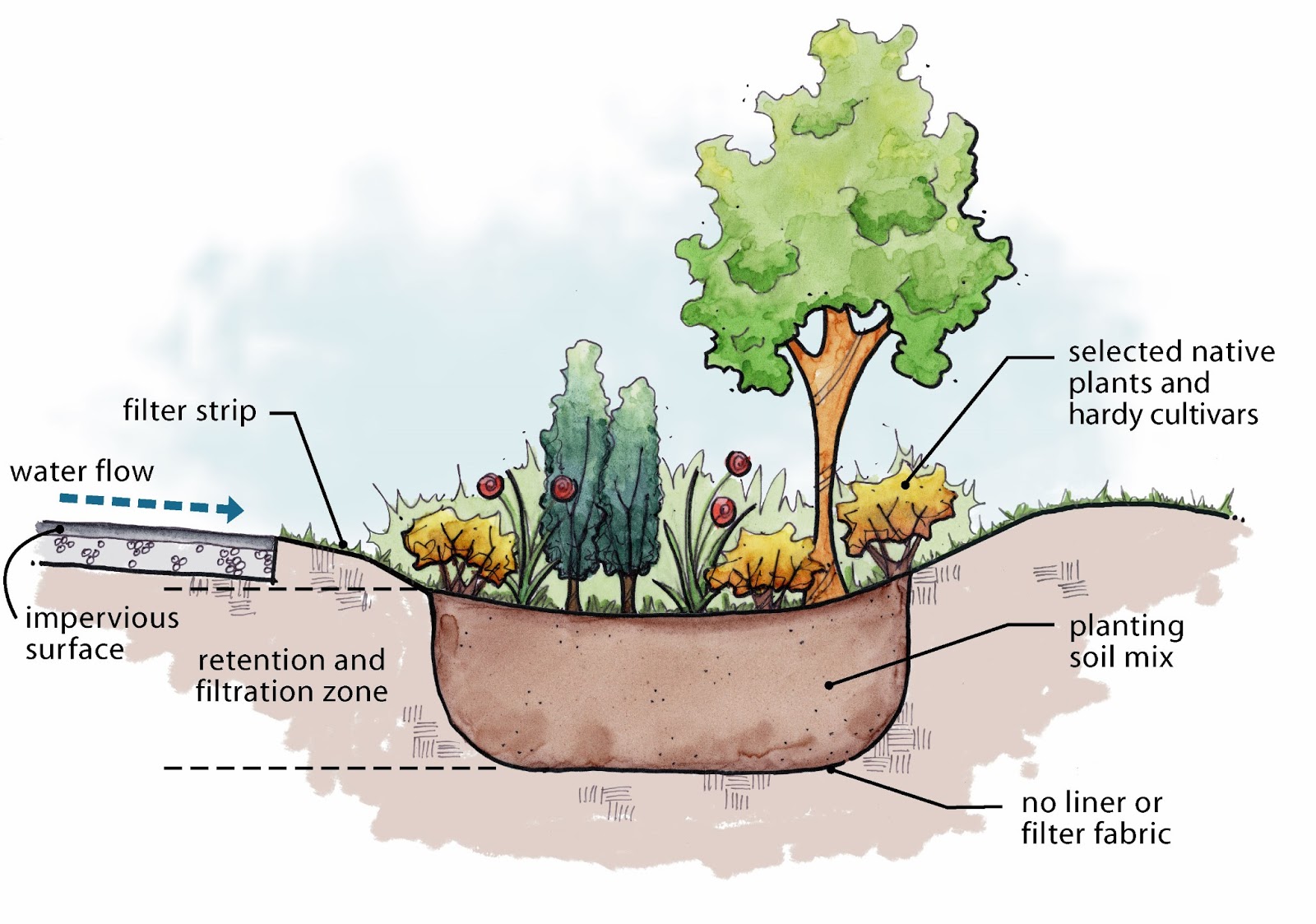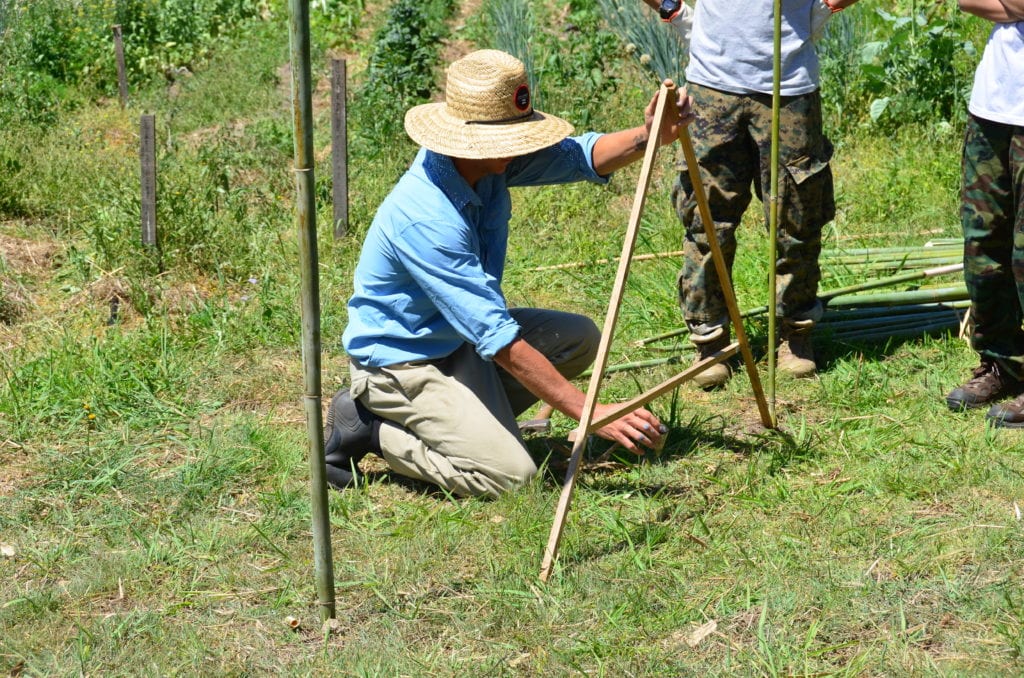Water is the elixir of life. I’ve always felt a very natural draw to water, despite being scared of putting my head below the surface and my inability to hit a stroke. There’s something very ominous about the power of bodies of water. One time I took a 200km canoe trip with a crazy Australian guy in the Rio San Juan and we didn’t even know how to ride a canoe at the start, but the water was really calling us.
About two thirds of the entire planet is covered in water, yet less than 1% of it is accessible and potable. Runoff and evaporation rates continue to rise as soil degradation is going from bad to worse. A good permaculture design attempts to keep all the rainwater on the land and release it efficiently, touching as many parts of the land as possible. Water security is a serious global problem; permaculture addresses it using different techniques to keep water on a landscape, harvest rainwater, recycle greywater and use earthworks when necessary.
Earthworks is about moving soil in a landscape to build things like ponds and swales. Earthworks can be done with big machines like bulldozers and the like even, although these machines might not really fit one’s image of ‘sustainable’ they have great power and can be used to do good things too. Earth works are ethical when they reduce energy needs, diversify landscapes for feed production, permanently rehabilitate landscapes for food production, save materials, enable better land use and/or help re-establish vegetation. Some strategies employing earthwork features to manage water are:
-Dams and Tanks – storage
-Swales – absorption, recharge groundwater
-Diversion systems or channels – erosion and runoff control
-Irrigation layouts and in particular for flood or sheet irrigation
-Terraces are best used for highly sloped areas (i.e. Loess Plateau Watershed Project)
A good permaculture design connects many swales and dams together on a single site so that the same drop of water can serve as many functions as possible before it is returned to the bigger atmosphere. A swale is a water-harvesting ditch that is dug matching the contour of the landscape with a soft soil mound on the downhill side of the feature. Swales were initially devised as a tree planting strategy and have since evolved to serve many more functions.

Fast moving water erodes soil and landscapes and doesn’t allow for the water to really sink in and absorb deep into the land. Managing water on a landscape is all about slowing it down and letting it naturally sink into the land along the contours and then dribble downslope. It’s all about making the best use of a super valuable resource.

Rainwater harvesting is another strategy to help manage the water coming into your site. Rainwater harvesting is an excellent way to extend the life of water and maximize its potential for your land. Some principles of rainwater harvesting:
-Long and thoughtful observation
-Start at the top or highpoint of your property and work your way down (this might be your roof)
-Start small and simple, these systems are easier to create and maintain and they maximize edge effect
-Slow, spread and infiltrate the flow of water. The goal is to calm the flow of water to reduce destructive erosion and – increase the time and distance of water flows- longest path, longest time, connect the most possible elements.
-Always plan an overflow route and manage that flow as a resource
-Create a living sponge
-Do more than just harvest water – maximize the beneficial relationships and efficiency by stacking functions
-Continually reassess your system – the ‘feedback loop’ return to step 1 and don’t take anything personally
Crazily, there are some locales in the USA where they have outlawed rainwater harvesting. Yes, they have made it illegal to catch something falling out of the sky. I don’t know how there could possibly be enough people that seriously think that was a good idea, seems dubious at best.
There was a discussion about contour which I thought I had understood previously, but then got super confused in the theoretical discussion about it. We went out into the field and learned to do surveying and now it all makes so much more sense. Contour lines on a landscape reveal the shape of the curves on the land. Each contour line is at the same level (altitude) and I’ve learned that this is the best possible way to farm and naturally retain water on land. Water falls at a ninety degree angle to the contour of the land. We learned to survey using old school A frames and high-tech laser levels. This one’s kind of tough to explain in writing, it’s one of those things you just have to try to really understand it.
Greywater is the water that goes down the drain from your sink and showers. A family of four might produce 51,000 gallons of greywater over the course of a single year; this is more than enough water to irrigate a lawn garden. Assuming there’s no strong chemicals (i.e. bleach) going down the drain, this water can be filtered naturally (i.e. reed beds) and passed through into your land. There’s absolutely no reason to be wasting all of this water and sending it to the sewage when it can be easily treated and reused right on your land. Letting this water go down the drain is basically the same thing as washing your hard earned dollars down the same drain. How do you feel about wasting your money?


